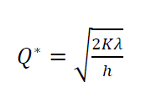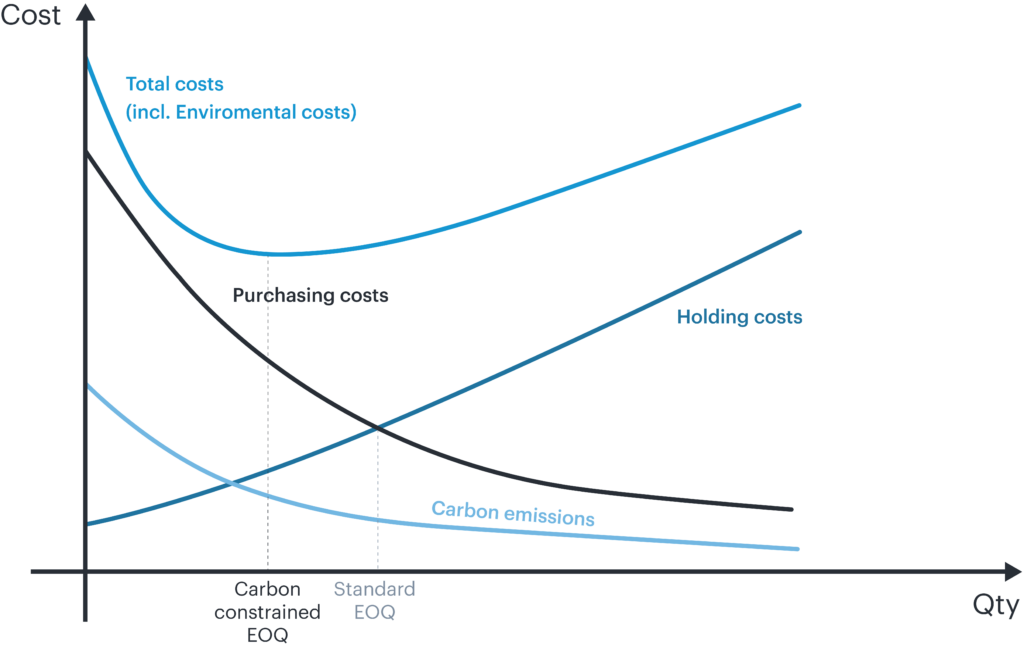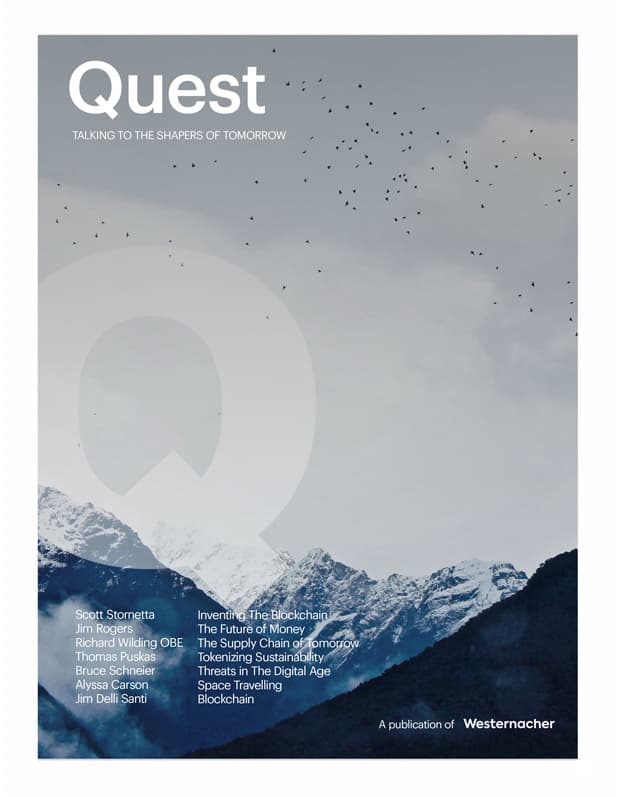Share this article
Follow us on Linkedin
Lot sizes are an important parameter in supply chain management; in fact, they have an impact on the frequency of replenishment of goods and consequently, the optimal safety stock is maintained to meet a target service level goal.
Most of us are probably familiar with the economic order quantity (EOQ) model. This economic model is used in inventory control theory to find the order quantity that minimizes the total average cost of replenishment under deterministic demand conditions and assumptions, such as a constant demand rate.
The Wilson’s or Harry’s formula determines how to calculate the EOQ under these circumstances:

Where:
- λ is the constant rate of the demand over time
- h the inventory holding cost per unit
- and K is the fixed cost for ordering or producing
The EOQ model accounts solely for the economics of the replenishment and inventory holding activity related to the provision of required items. But these activities also have impacts on the environment and society, which should be considered as well.
The value of the EOQ could change when considering environmental or social impacts.

In the literature, there are several models that allow for the consideration of the carbon footprint in determining an environmental EOQ.
In particular, we have identified models that determine an environmental EOQ
- through direct accounting treating the carbon footprint as an additional source of cost;
- through a carbon tax assumed to have an externally tax applied to the emissions;
- applying a direct cap that could be set by the regulatory agencies or by the public awareness (e.g. imposed by customers);
- considering a cap and the possibility to access the carbon trading market.
The EOQ calculation using direct accounting becomes

Where the additional parameters f and g represent respectively the fixed cost of environmental impact for each replenishment cycle due to setups, order processing or transportation while g the cost of environmental impact due to the inventory holding.
The EOQ is considered as an input from the various algorithms in SAP IBP. However, this does not mean that the EOQ cannot be calculated. In fact, the Harry’s formula for calculating the standard EOQ can be configured in SAP IBP as a calculated key figure. The same applies to the environmental models mentioned above.
This can allow planners to review their plans and perform simulation in SAP IBP by applying different lot sizes and analyzing the impacts.
As an alternative, the EOQ can be calculated externally through an integration with the Business Technology platform. The necessary data and parameters can be passed to BTP to calculate the lot size proposed by the system. The externally calculated EOQ can then be updated directly in the corresponding master data or stored in an additional attribute.
The decision on which approach to use strongly depends on how the results of the calculated EOQ are planned to be used and on the processes for master data governance of the enterprise.
The application of a sustainable EOQ could allow organizations to optimize and potentially reduce their carbon footprint by simply adjusting their replenishment policies. The effects of this optimization will lead to more sustainable stock levels and replenishment plans.
